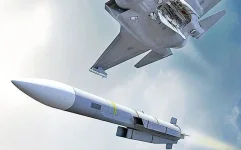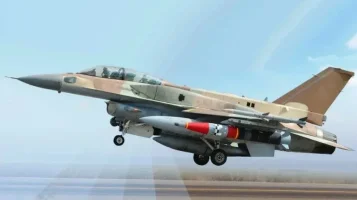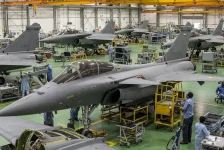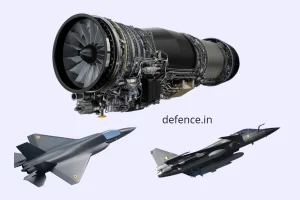- Views: 3K
- Replies: 5
The Indian Air Force (IAF) is poised for a significant upgrade to its aerial combat strength with the forthcoming induction of the Astra Mk2 Beyond Visual Range Air-to-Air Missile (BVRAAM).
The advanced missile system, developed by India's Defence Research and Development Organisation (DRDO), has reportedly entered Limited Series Production (LSP), signalling a major step towards bolstering the nation's self-reliance in critical defence technologies and enhancing its strategic capabilities in the region.
The Astra Mk2 is engineered to provide a distinct advantage over the Chinese-developed PL-15E missile, which the Pakistan Air Force (PAF) is known to operate on its J-10CE and JF-17 fighter aircraft.
Boasting a superior engagement range and incorporating advanced technological features, the Astra Mk2 has undergone extensive evaluations, including captive flight trials on the IAF’s Sukhoi Su-30 MKI fighter jets. These successful tests led to the approval for its LSP earlier this year.
According to reports, the missile has been tested in unguided mode and is equipped with a new indigenous Active Electronically Scanned Array (AESA) seeker, a critical technology that enhances its targeting precision and effectiveness against sophisticated aerial threats. AESA seekers allow missiles to track multiple targets with high accuracy and offer better resistance to electronic jamming.
The commencement of the LSP phase indicates that the IAF has likely started receiving initial consignments of the Astra Mk2. These are expected to be integrated primarily with its Su-30 MKI fleet, which serves as the main platform for this advanced weaponry.
The combination of the Su-30 MKI's capabilities and the Astra Mk2's extended reach will transform the aircraft into an even more formidable asset for air superiority missions, enabling the IAF to engage hostile targets from greater distances.
Experts suggest that in any potential conflict scenario, the Astra Mk2's presence could offer a crucial strategic edge, allowing for swift and potent responses to adversarial air activities.
Beyond Visual Range Air-to-Air Missiles like the Astra are vital in modern aerial warfare, allowing pilots to engage and neutralize enemy aircraft before they come within visual range, thereby increasing pilot safety and mission effectiveness.
While the initial integration of the Astra Mk2 is focused on the Su-30 MKI, its successful development and entry into LSP point to a robust and ongoing missile development programme in India.
The advanced AESA seeker technology and the missile's extended range are considered critical components of India's comprehensive air defence strategy. This is particularly relevant for countering regional air forces equipped with modern air-to-air munitions.
Future plans may see the Astra Mk2 and its subsequent variants integrated with other IAF platforms, including the indigenous Tejas fighter and potentially the Rafale.
The Astra Mk2 reportedly features an engagement range exceeding 160 kilometers, which places it significantly ahead of the claimed range of the PL-15E (around 145km for the export variant).
This extended reach, coupled with its indigenous design and production by DRDO and public sector undertaking Bharat Dynamics Limited (BDL), strengthens India's ability to counter aerial threats from standoff distances.
This indigenous capability also reduces reliance on foreign missile suppliers, aligning with India's broader 'Atmanirbhar Bharat' initiative in the defence sector. The successful development of such complex weapon systems underscores the growing sophistication of India's defence industrial base.




